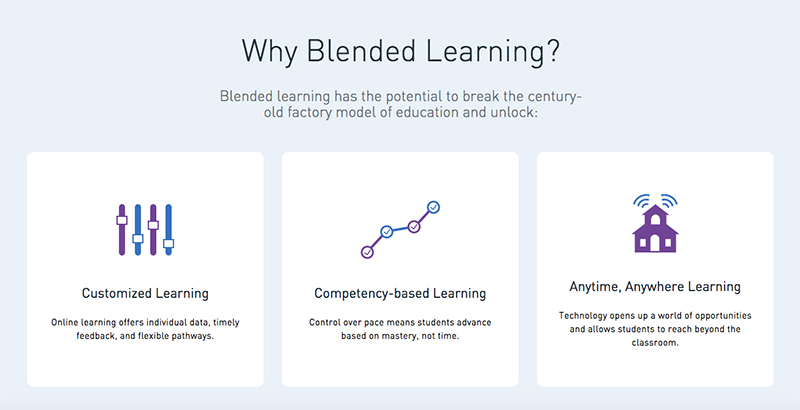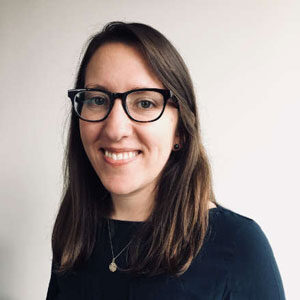Analysis: Before Jumping on the Ed Tech Bandwagon, Identify Your School’s Problem. Then Find the Right Blended Learning Solution

There’s almost no escaping the presence of technology in classrooms. Now that 1:1 technology initiatives are widespread, schools are at risk of jumping on the bandwagon without a core purpose for technology integration. Tech-rich environments in themselves are not always negative, but they also don’t necessarily transform the classroom from the traditional factory model to a more student-centered approach.
The key to effectively launching (and then scaling) technology integration in a school is using it to solve an existing problem.
In our research, we observed that many educators turn to blended learning as a means to enable personalized learning for students. Blended learning accomplishes this by giving students some element of control over the time, place, path or pace of their learning by integrating online and face-to-face educational experiences that occur, at least in part, in a supervised brick-and-mortar location away from home.
But even with good intentions when setting out to “go blended,” educators need to consider what problem their blended initiative aims to solve. Only once your team identifies the problem(s) you’re trying to fix will it be clear which implementation plan (or blended-learning model) is the right course for your school. Here’s how to define your problem area(s) and match them with an appropriate blended solution.
Identify what type of problem you have
Not all problems are created equal. We can distinguish between two types of problems in schools, each lending itself to a different approach to innovative solutions (i.e., blended learning).
● Core Problems. These affect mainstream students and teachers in tested subjects, where most schools already have an existing solution or program in place. These circumstances are often best suited to sustaining innovation, which seeks to address problems by improving whatever’s currently on offer for students, like adopting a new adaptive curriculum to raise math proficiency. Sustaining innovation is a reliable way to improve the existing solution to serve students better without transforming the classroom entirely.
● Nonconsumption Problems. These exist when schools can’t provide a learning experience and have no option other than to do without. Nonconsumption can be found in many settings: Consider students who want to take an elective not offered by their school, students with schedules that prohibit them from attending certain classes or students who have dropped out. Targeting nonconsumption problems is an opportunity to move beyond the traditional model through disruptive innovation, which creates new access to a given product or service, like offering a virtual AP Physics course despite a shortage of qualified local teachers.
Understand which blended-learning models fit each type of problem
Blended learning takes shape in variable ways through seven broad models, each with unique implications for the student and teacher. But there’s a difference between blended learning’s hybrid models, which are sustaining innovations relative to the traditional classroom, and disruptive models that redesign key elements of the traditional classroom.
● Sustaining (hybrid) models of blended learning are generally the easiest to deploy for core problems, such as a need to improve math and reading scores. Schools working toward this goal might have a smoother experience implementing a hybrid model that affords flexibility for personalization within the bounds of the traditional system, such as Station Rotation or Flipped Classroom. While both models afford opportunities for deeper learning, neither fundamentally changes the structures of school (schedules, seat time, etc.).
On the other hand, addressing a core problem with a disruptive solution right off the bat means that the disruptive solution must immediately live up to the expectations of the traditional system, or conform to it. This could limit the potential for the disruptive solution to improve, grow and redefine expectations for what school should look like.
● For problems in areas of nonconsumption, such as expanding 1:1 tutoring or elective classes, schools have a greater opportunity to forgo the traditional classroom model and pursue a disruptive solution that unlocks elements of time, pace, path and place in learning. Since no existing solution exists for nonconsumption problems, a disruptive model can grow in its early stages without falling subject to traditional expectations. Building toward personalization using blended-learning models like Individual Rotation or Flex could be the best fit for nonconsumption objectives. As schools improve on these disruptive models, they will see new opportunities to expand the models’ reach and demonstrate their viability for all students.
To clarify, disruptive models of blended learning aren’t better than sustaining (or hybrid) ones — rather, they depend on the circumstances. Matching a disruptive or sustaining approach with the nature of the problem at hand is a critical part of the innovation process.
How to match dream solutions to the right problem
Ideally, school leaders should clearly identify and categorize the problem before casting for (and much less purchasing) solutions. Getting excited about a new approach or solution isn’t bad, but it’s important to identify the right circumstances for it, rather than trying it out just anywhere.
For example, imagine that a principal gets inspired by another school whose Flex model frees up space, time and teacher capacity to help students design projects in their community. Rather than going straight for a whole-school transformation to Flex, this principal would do well to form a team with significant autonomy to try the disruptive approach during a summer session or another area of nonconsumption.
Blended learning isn’t the answer for every school’s problems — but could it help solve yours? It’s possible to dramatically power up the effectiveness of blended learning for students by better differentiating between core and nonconsumption problems at the outset.
Chelsea Waite is a research fellow at the Clayton Christensen Institute focusing on blended and personalized learning in K-12 education. Jenny White is the K-12 education research associate and content manager of the Blended Learning Universe.
Get stories like these delivered straight to your inbox. Sign up for The 74 Newsletter

;)
